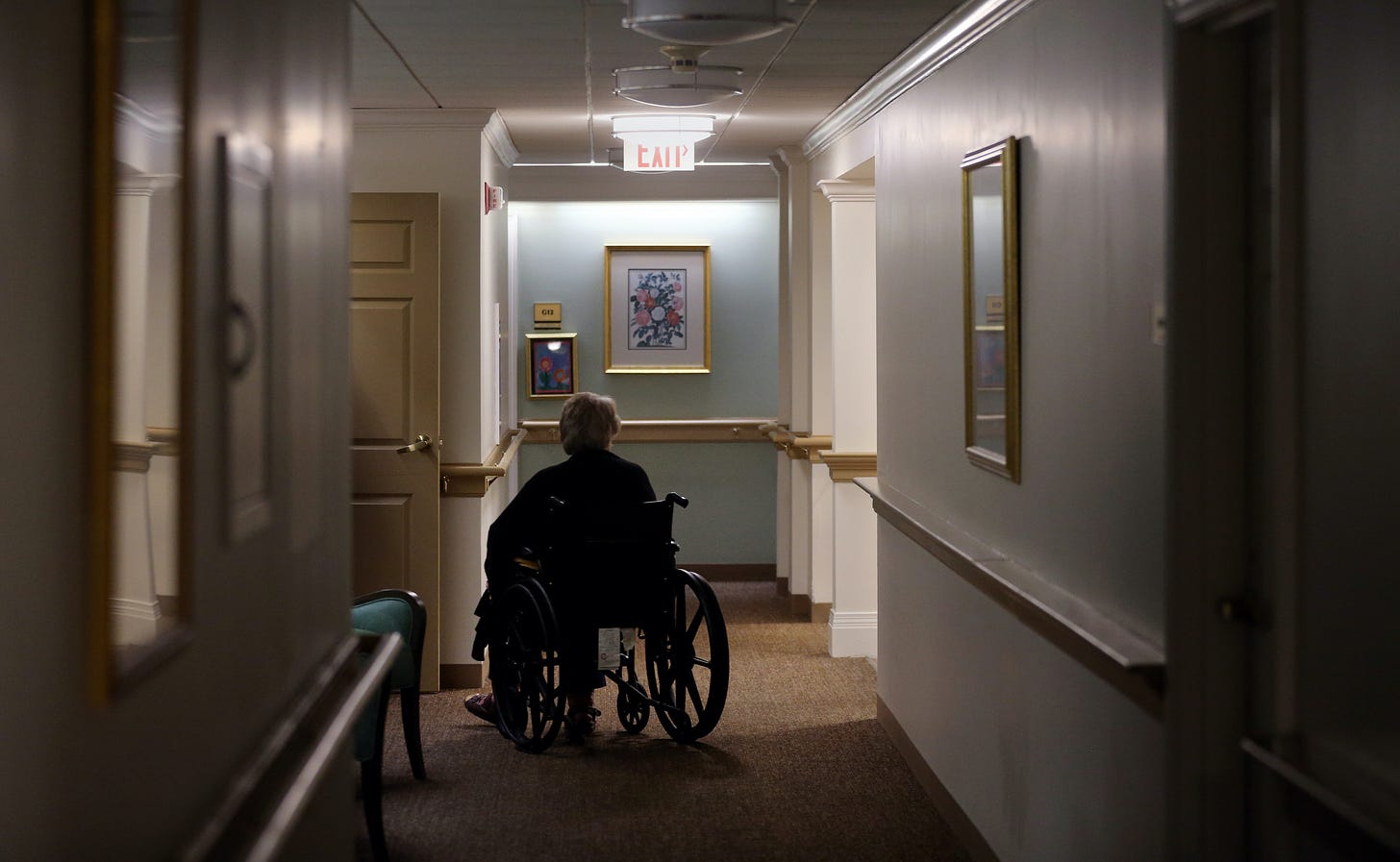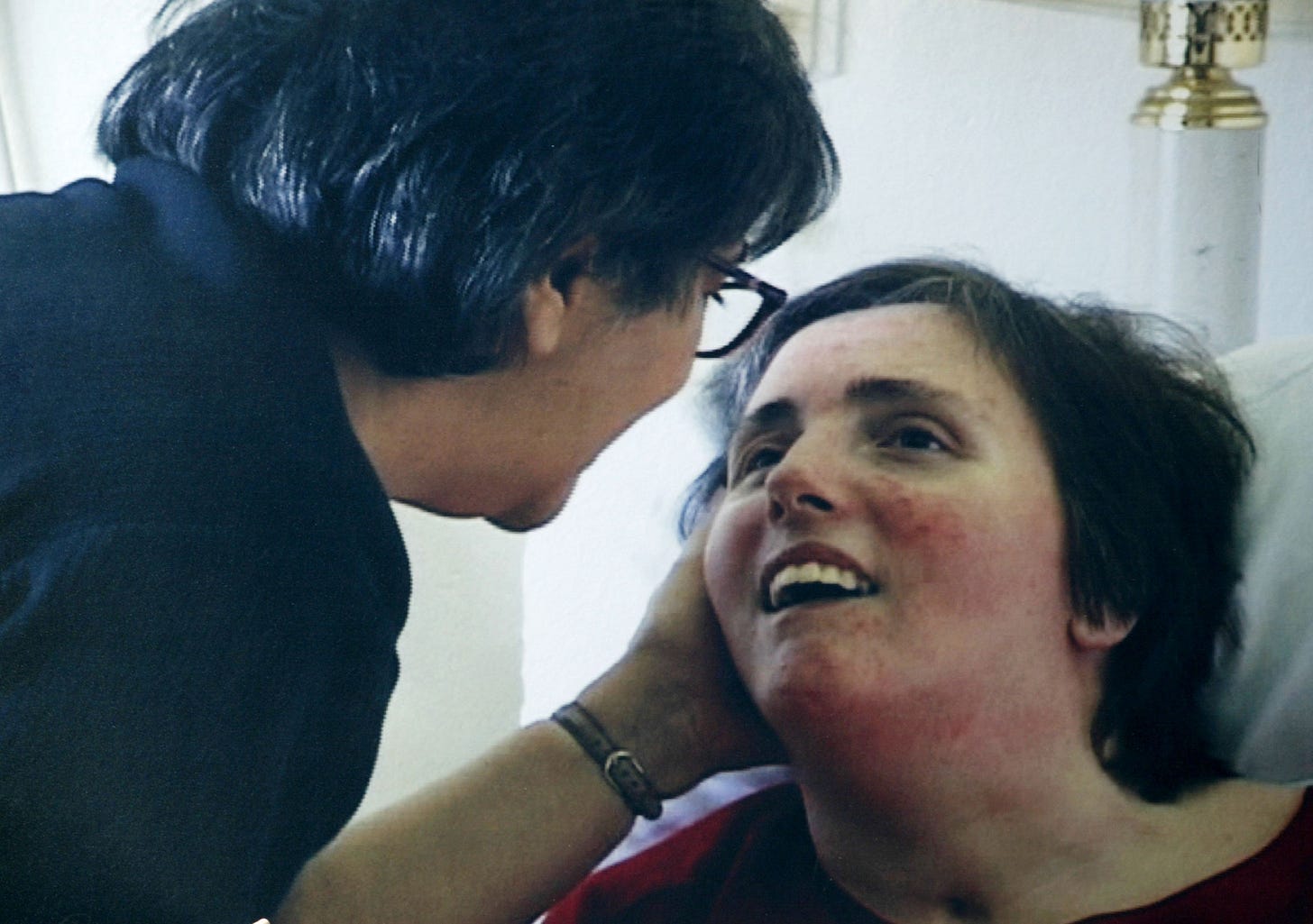Boomers In The Twilight Zone: Your Stories
Readers open up about the fraught topic of end-of-life decisions, including the increasingly open path to euthanasia.
In response to my column on aging and assisted suicide, a reader writes, “This is my first time dissenting over your posts, even though disagreeing with you is what I enjoy most about the Dish”:
My grandmother was 89 when she started having heart problems. Doctors recommended a pacemaker, saying the device would give her several more years of not having to worry about her heart. She and my family agreed.
It was the worst decision we ever made. Immediately after the procedure, she rapidly developed dementia. She forgot who she was, had to live in a miserable senior facility for Alzheimer’s patients, and lived an extra five years that could barely be described as living. Her heart was beating with the health of a 40-year-old, but her life had already ended. If we could go back and do it again, we never would have let her get that pacemaker.
This would be the denial or rejection of care from a medical professional with the goal of dying earlier. I don’t see much of a difference between doctors providing death and choosing not to stop it. Saying there’s a difference is like saying there’s a difference between flipping a dime or flipping a quarter; the end result is always heads or tails.
Our regret over elongating her life is a real example of the rejection of the moral absolutism that states every second of human life is incalculably valuable. Sometimes the pain and suffering of individuals with serious health problems is a moral negative, and it is not the business of the government to interfere in these decisions. While I believe the Canadian law goes too far, I can understand from personal experience the agony of these decisions, and the last thing my family would have needed is the government limiting our options.
It may seem like I agree with much of your piece for a dissent, and you go out of your way to say that end-of-life care is different. But my grandmother was very healthy for an 89-year-old and still sharp, so it was not treated like an end-of-life care decision by her doctors, her family, or herself. It’s an important difference. So when is the cutoff for getting life-elongating procedures for people who are very old or very sick? How do we make these decisions? Who should be the decision-maker? State regulation limiting these choices benefits nobody. We aren’t very far removed from the Terri Schiavo case, and George W. using her suffering as a political wedge issue, keeping that poor woman alive.
Here’s a reader on the financial costs of the final years:
This 82-year-old subscriber applauds your piece on the approaching perils of extreme old age. I offer the following thoughts on some more prosaic points: What will all this cost and who will pay for it?
This year I lost my beloved wife to cancer at age 85. When presented with her diagnosis, she opted to forego treatment and rely on hospice care. It worked for her. She had one year from the time of diagnosis until she passed. During the last nine of those months, she (we) needed significant extra care; first 24/7 home health care, then, when that appeared no longer sufficient, a seven-month stay in a skilled nursing facility (where I spent every day with her).
With long-term-care insurance, my out-of-pocket cost for this care “package” was still $110,000. That was not a crucial financial burden on me, the survivor. But how many of our fellow Americans could say the same? Many of our fellow citizens can’t come up with the cost of a car repair.
Many Americans think Medicare will cover such costs. It doesn’t! Medicaid does cover long-term care, but at the cost of impoverishing a surviving spouse in order to qualify. Trust me that spending the end of your “sentence” in a facility dependent on revenue from Medicaid is, to say the least, not an attractive prospect.
We, as a nation, are totally unprepared for the aged-care crisis ahead. In fairness, it doesn’t strike me that other “advanced” societies are prepared either. The projected care needs, and costs, are simply staggering. Sauve qui peut!
This next reader has a modest proposal:
End-of-life care is covered in my MPH. I don’t recall the exact figure, but some crazy percentage of overall health spending covers the last three months of life. It’s a real moneymaker for hospitals. And it involves effectively torturing patients. It makes me wonder whether a cheap solution would be to provide services to ensure everyone has considered and produced do-not-resuscitate (DNR) preferences. Perhaps as a condition of enrollment in Medicare, one would have to file DNR records. Maybe that is fiddling at the margins, but it seems worth doing.
I think being kept alive in pain and misery indefinitely is a form of torture — and any way in which we can avoid this happening against the sites of the patient we should explore. This next reader is planning ahead — to end his own life:
Keep reading with a 7-day free trial
Subscribe to The Weekly Dish to keep reading this post and get 7 days of free access to the full post archives.



